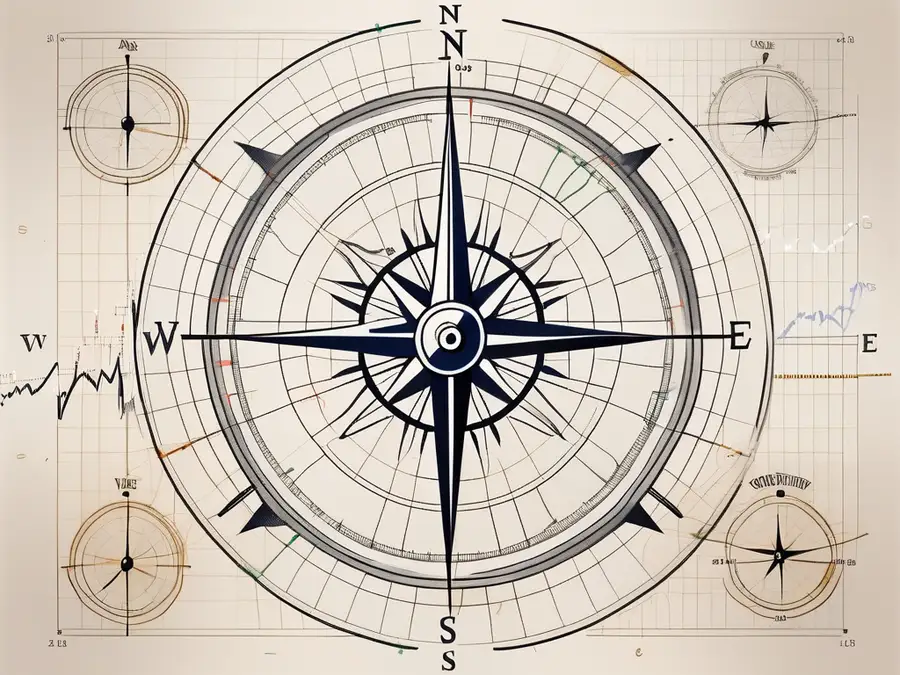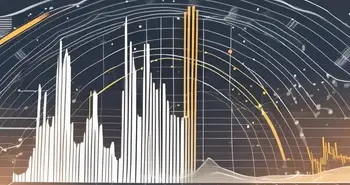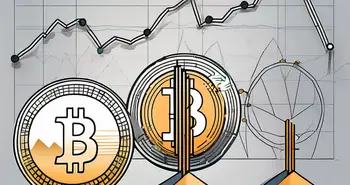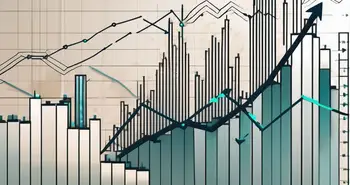The Basics of Gap Trading

Gap trading is a powerful strategy that can help traders profit from changes in stock prices. In this ultimate guide, I will take you through the basics of gap trading, the mechanics behind it, strategies for successful gap trading, and risk management techniques. By the end of this article, you'll have a solid understanding of gap trading and be well-equipped to implement it in your own trading endeavors.
Understanding the Gap Trading
Before diving into the world of gap trading, it's important to comprehend what gaps are and how they can be leveraged to generate profits.
Gap trading involves capitalizing on the price gaps that occur on a stock chart. A gap occurs when the opening price of a stock significantly differs from its previous closing price. This can happen overnight due to unforeseen events, such as earnings reports, economic news, or even geopolitical developments.
These gaps present opportunities for traders to enter or exit positions at advantageous price levels, potentially maximizing profit potential.
What is Gap Trading?
Gap trading is a popular strategy among traders who seek to take advantage of the price gaps that occur in the stock market. By understanding the dynamics of these gaps, traders can make informed decisions and potentially profit from the market's volatility.
Not all gaps are created equal. It's essential to understand the various types of gaps to make informed trading decisions.
Common gap: This is the most frequent type of gap and occurs within the bounds of a price trend. It doesn't necessarily imply a change in the overall trend and is often caused by normal market volatility.
Breakaway gap: This type of gap signifies a significant shift in market sentiment. It usually occurs at the end of a consolidation phase and indicates the start of a new trend. Breakaway gaps can be highly profitable for traders who recognize them early.
Exhaustion gap: An exhaustion gap occurs near the end of a trend and signals that the prevailing trend may be nearing its conclusion. Traders can take advantage of exhaustion gaps by positioning themselves for a potential reversal or trend continuation.
The Importance of Gap Trading in the Stock Market
Gap trading plays a crucial role in the stock market, offering traders opportunities to profit from sudden price movements. By understanding gaps and applying the right strategies, traders can increase their chances of spotting profitable trades and staying ahead of the curve.
As an expert gap trader, I've seen firsthand how this strategy can lead to significant profits. In one particular instance, I spotted a breakaway gap on a popular tech stock just as market sentiment was turning bullish. I seized the opportunity and entered a position, allowing me to ride the stock's upward momentum and generate substantial returns.
However, it's important to note that gap trading comes with its own set of risks. Gaps can be unpredictable, and there is always a possibility of a gap being filled, which means the stock price returning to its previous level. Traders must carefully assess the risk-reward ratio and implement appropriate risk management strategies.
My advice to aspiring gap traders is to combine technical analysis with thorough research to identify potential gap trading opportunities. By staying on top of market news, studying price patterns, and using appropriate indicators, you can improve your chances of success.
Remember, successful gap trading requires discipline, patience, and continuous learning. It's a skill that can be honed over time, and with practice, you can become proficient in identifying and capitalizing on gap trading opportunities.
The Mechanics of Gap Trading
Now that we have a solid understanding of what gap trading entails, let's delve into the mechanics behind it.
Identifying Gaps in the Market
To effectively trade gaps, you first need to identify them on your stock charts. Most trading platforms provide tools and indicators specifically designed for this purpose.
Keep an eye out for price gaps caused by overnight news, earnings releases, or market-moving events. These gaps often occur on high trading volumes and can provide valuable trading opportunities.
Analyzing the Gap
Once you've identified a gap, it's crucial to analyze it to determine its potential significance and the actions you should take. Consider the type of gap, the volume accompanying the gap, and how the gap relates to the prevailing market trend.
For breakaway gaps, you'll want to assess the strength of the breakout and look for confirmation signals from other indicators or price patterns. Exhaustion gaps require analysis of potential trend reversals and identification of key support or resistance levels.
Timing Your Trades
Timing is everything in gap trading. To optimize your chances of success, consider waiting for confirmation before entering a trade. This can involve waiting for the stock price to retest the gap or observing additional bullish or bearish signals.
Remember, not every gap leads to a profitable trade. Patience and discipline are key traits for successful gap traders.
Strategies for Successful Gap Trading
Now that you understand the mechanics of gap trading, let's explore some proven strategies to help you navigate the market effectively.
The Breakaway Gap Strategy
The breakaway gap strategy capitalizes on the momentum generated by breakaway gaps. Look for a strong breakout from the consolidation phase and enter a position in the direction of the gap. Use appropriate risk management techniques, such as setting stop losses and trailing stops, to protect your capital.
The Common Gap Strategy
The common gap strategy aims to profit from the normal market volatility that causes common gaps. Trade these gaps by entering in the direction of the prevailing trend and setting appropriate profit targets. Oftentimes, these gaps are quickly filled, allowing for quick profits.
The Exhaustion Gap Strategy
Exhaustion gaps can signal the end of a trend, allowing traders to profit from potential reversals. Use technical indicators and price patterns to confirm the exhaustion gap and look for entry opportunities in the opposite direction of the prevailing trend.
Risk Management in Gap Trading
Successful traders understand the importance of risk management. When it comes to gap trading, managing risk is paramount to long-term success.
Setting Stop Losses and Take Profit Levels
Always set stop losses to limit potential losses in case a trade goes against you. Additionally, establish take profit levels to secure profits when the trade moves in your favor. These levels should be based on sound technical analysis and risk-reward ratios.
Managing Risk with Diversification
To offset the inherent risks of gap trading, consider diversifying your portfolio. By spreading your investments across various stocks or sectors, you can reduce the impact of individual gaps on your overall trading performance.
Understanding the Role of Volatility
Volatility is a key factor in gap trading. Higher volatility often leads to more significant gaps, providing greater profit potential. However, it also increases the risk of adverse price movements. Factor in volatility when analyzing gaps and adjusting your risk management strategies accordingly.
FAQ
What is gap trading?
Gap trading involves capitalizing on price gaps that occur on a stock chart, usually caused by overnight news or market-moving events.
What are the different types of gaps?
The different types of gaps are common gaps, breakaway gaps, and exhaustion gaps. Each type has its own characteristics and implications for trading strategies.
How can I identify gaps in the market?
Most trading platforms provide tools and indicators for identifying gaps. Keep an eye out for unusual price movements accompanied by high trading volumes.
How important is risk management in gap trading?
Risk management is crucial in any trading strategy, and gap trading is no exception. Setting stop losses, taking profit levels, and diversifying your portfolio are all essential risk management techniques.
What role does volatility play in gap trading?
Volatility plays a significant role in gap trading. Higher volatility often leads to more significant gaps, but it also increases the risk of adverse price movements. Consider volatility when analyzing gaps and adjusting your risk management strategies.
With the information presented in this ultimate guide, you now have a solid foundation for successful gap trading. Remember to conduct thorough research, practice disciplined risk management, and stay tuned to market news and trends. Combining expertise with strategic execution will enhance your chances of consistent profits in the exciting world of gap trading.
Ready to take your gap trading to the next level? Discover the innovative world of Morpher, where cutting-edge blockchain technology meets trading without boundaries. Say goodbye to fees and hello to infinite liquidity, fractional investing, and the freedom to short sell across diverse markets. With Morpher, you're in control with a secure, non-custodial wallet and the option to leverage your trades up to 10x. Experience a unique trading platform that's not just about stocks but also cryptocurrencies, forex, and even niche markets like NFTs, watches, and sneakers. Sign Up and Get Your Free Sign Up Bonus today, and join the trading revolution with Morpher.

Disclaimer: All investments involve risk, and the past performance of a security, industry, sector, market, financial product, trading strategy, or individual’s trading does not guarantee future results or returns. Investors are fully responsible for any investment decisions they make. Such decisions should be based solely on an evaluation of their financial circumstances, investment objectives, risk tolerance, and liquidity needs. This post does not constitute investment advice.

Painless trading for everyone
Hundreds of markets all in one place - Apple, Bitcoin, Gold, Watches, NFTs, Sneakers and so much more.

Painless trading for everyone
Hundreds of markets all in one place - Apple, Bitcoin, Gold, Watches, NFTs, Sneakers and so much more.









